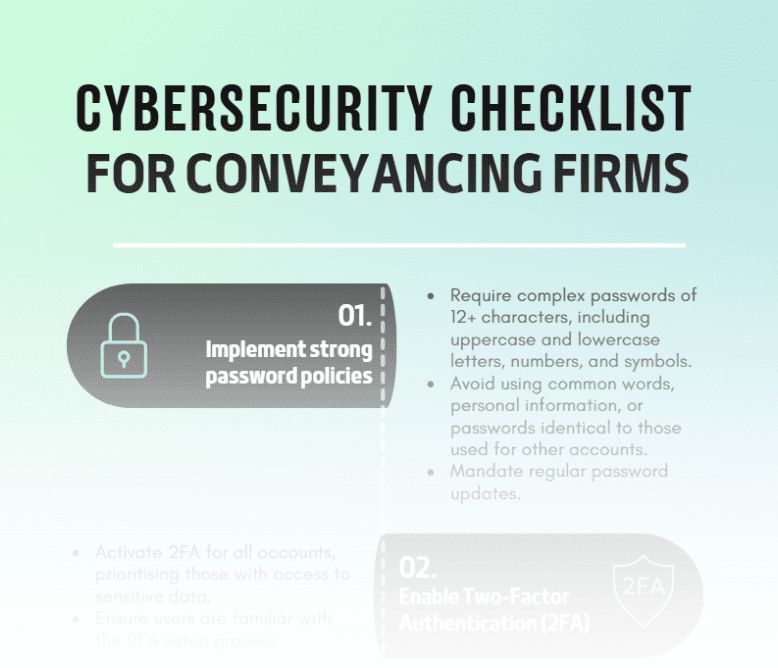Electronic conveyancing (eConveyancing) has brought many practical benefits to the way conveyancers conduct their business – speeding up processes, reducing errors and increasing the overall transparency of property transactions.
But as with any move into the digital sphere, there’s always a risk to security and data protection if processes aren’t managed and properly and kept in check.
So, it stands to reason that subscribing to an ELNO isn’t just a one-step process before you hit “autopilot” in the land of eConveyancing; instead, it marks the start of your ongoing duty to regularly check you’re complying with subscriber obligations designed to protect your business and offer security for your clients.
To maintain the integrity of the network and protect property transactions, Model Participation Rules (MPR) developed by the Australian Registrars’ National Electronic Conveyancing Council (ARNECC) set out general subscriber obligations in relation to client authorisation, verification of identity, right to deal, document retention and system security.
While you’ll naturally aim to do everything possible to protect your clients’ interests, it’s important to thoroughly familiarise yourself with the MPR because Registrars have the power to conduct ad hoc compliance examinations under Section 33 of the Electronic Conveyancing National Law.
What’s more, ARNECC prepares annual compliance monitoring and enforcement programs on behalf of State and Territory Registrars.
Most importantly, if your business is found to be non-compliant with the MPR, your access to an ELNO can be restricted, suspended or even terminated.
And this could present a major problem for your business in the context of recent mandates requiring all property transactions be carried out electronically.
To help your business avoid a few common mistakes and meet its obligations, here’s an overview of some of the most typical eConveyancing compliance errors reported by ARNECC.
Client authorisation
Not selecting or incorrectly selecting authority type
When entering authority type in the Transaction Details panel, it’s important to make sure you consult the MPR to determine whether your authority to act falls within the definition of “specific authority”, “standing authority” or “batch authority”.
Client Authorisation not signed and dated by the client or client agent
Clients are required to sign the authority statement, but if this is signed by an agent for the client, it’s essential to indicate their capacity to act as agent – such as an attorney or company director.
Client authorisation not signed and dated by the representative of representative agent
Details of the representative and representative agent (if appointed) must be completed in addition to signing.
eConveyancing verification of identity
Not providing enough evidence of the steps taken to verify identity
You must offer written details of the steps taken to verify identity along with enough supporting evidence to show these steps were taken. The materials must include copies of identity documents sighted and retained.
Believing the Anti-money Laundering and Counter-terrorism Financing Act 2006 (AML/CTF) ‘know-your-customer’ regime is the equivalent of the Verification of Identity standard.
The correct standard to follow is set out in Schedule 8 of the Model Participation Rules. Steps taken under the AML/CTF might not be considered reasonable under the MPR.
Not applying the Verification of Identity Standard completely
If you state that you’ve followed the Verification of Identity Standard in the MPR, then all aspects must be followed. For example, the standard is not followed if there is no face-to-face in-person interview with the person being identified, even if all other documents have been provided.
eConveyancing Verification of right to deal
Not providing enough evidence of the right to deal
You must provide material evidence of the steps taken to verify the right to deal including material copies of any right to deal documents sighted and retained by the subscriber.
Incoming mortgagee only relies on title search or copy of certificate of title
A title search or copy of a certificate of title can’t be the only supporting evidence given to verify the transacting party is a legal Person and has the right to enter into the Conveyancing Transaction. As a subscriber, you should explain in writing the steps you’ve taken to tie the registered proprietor to the mortgagor.
With e-conveyancing still so new to many practices, paying close attention to a few common mistakes experienced by others is one way to help your business sidestep the potential pitfalls and meet compliance obligations. Meanwhile, the MPR Guidance Notes are also a great tool to have on hand when it comes to quickly getting up to speed with your subscriber obligations.
If you are interested in electronic conveyancing solutions, you can book in an obligation-free demonstration at anytime to see how easy the platform is or click here to start searching.
You can also Contact Us via the website for any questions you might have.






